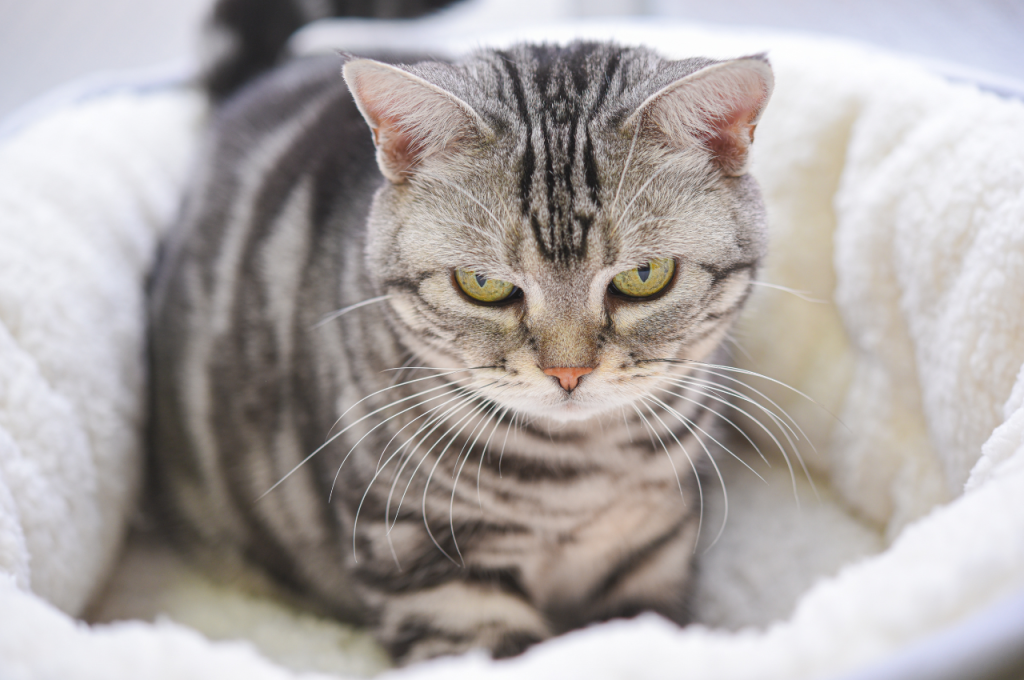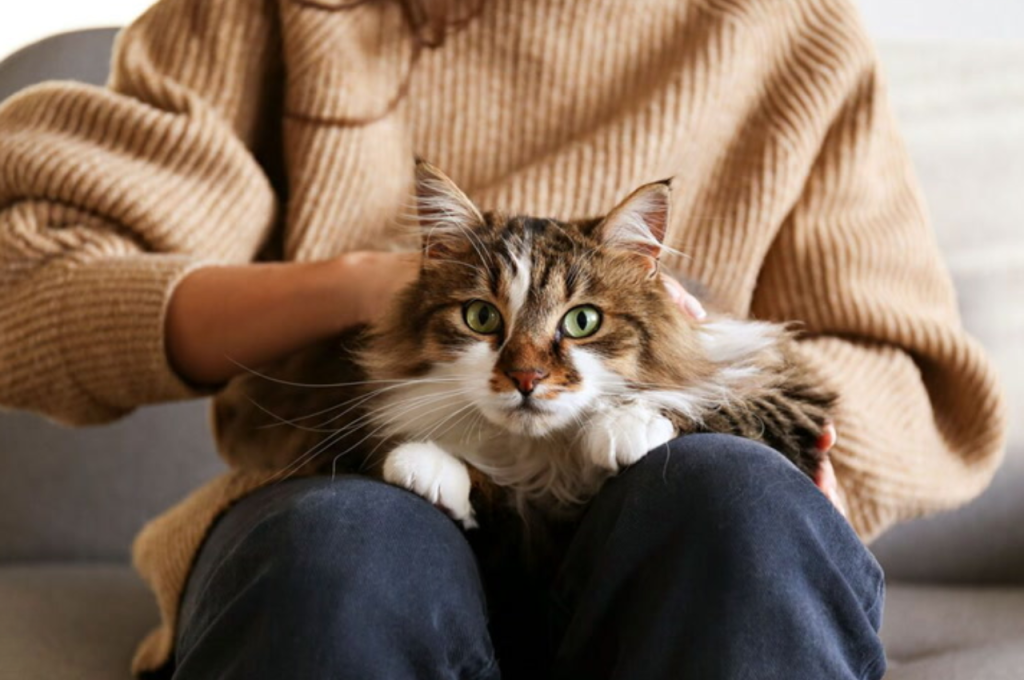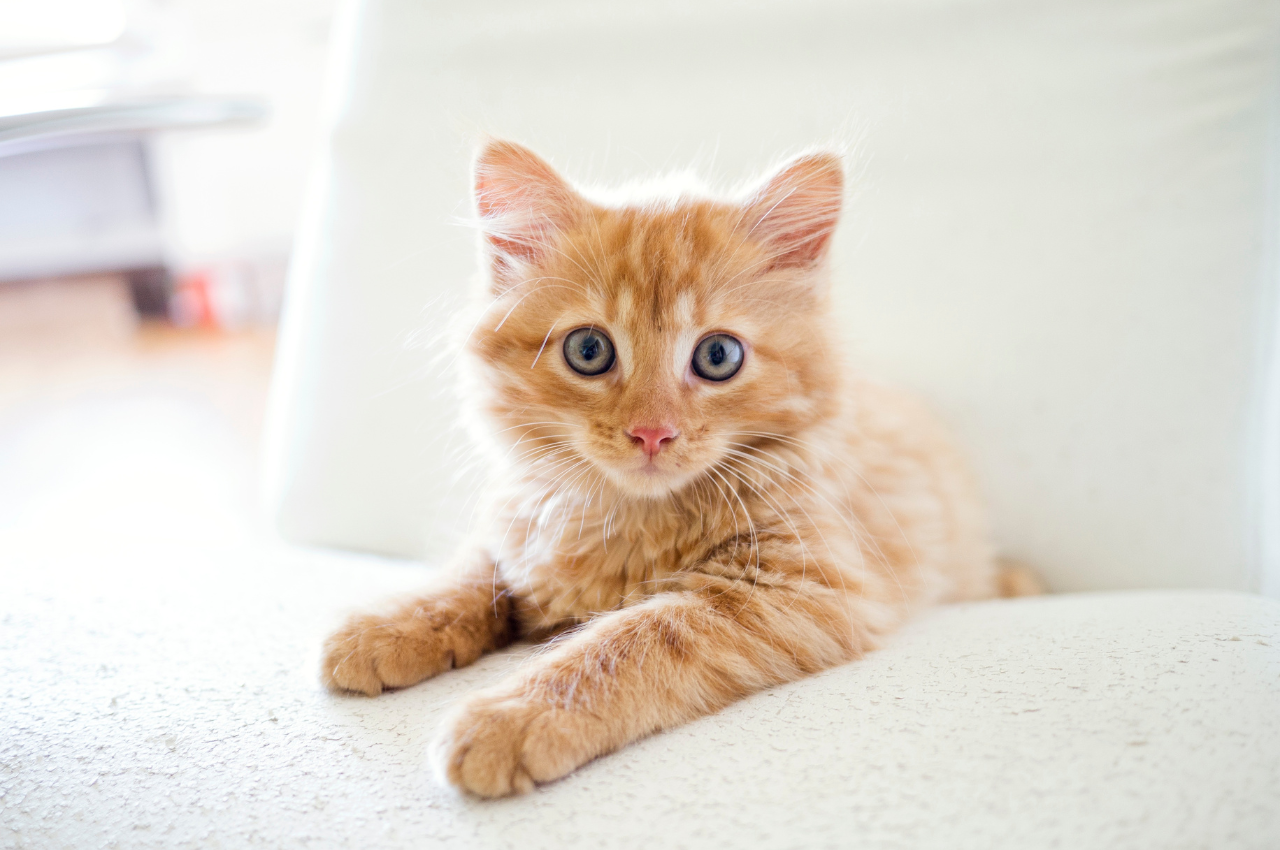Cats make biscuits as a way of showing affection and contentment. This behavior, also known as kneading, involves the cat pushing their paws in and out against a soft surface, mimicking the action of kneading dough.
Cats instinctively knead from a young age, often beginning while nursing to stimulate milk production. As they grow older, kneading becomes a way for cats to mark their territory, as the scent glands on their paws release pheromones onto the surface they are kneading.
Additionally, kneading can be a form of stretching and exercise for cats, helping to keep their muscles limber and strong. Understanding why cats make biscuits can deepen our bond with them and provide insight into their natural behaviors. So, the next time your furry friend starts kneading, take it as a sign of their love and contentment.
The Purring Baker: Feline Kneading Explained
Uncover the mystery behind why cats make biscuits with The Purring Baker: Feline Kneading Explained. Discover the fascinating reasons behind this adorable behavior and gain insight into the feline world.

Decoding Cat Behavior
Cats have a reputation for being mysterious creatures, and their behavior can sometimes be puzzling. One of the most curious behaviors that cats exhibit is kneading, also known as “making biscuits.” This behavior involves the cat pushing its paws in and out against a soft surface, often accompanied by purring. While it may seem like a random act, there are actually several reasons why cats engage in this behavior.
Historical Instincts Behind Kneading
One theory behind why cats knead goes back to their kittenhood. When kittens are nursing, they knead their mother’s belly to stimulate milk production. As they grow older, cats continue this behavior as a way to show contentment and relaxation. Kneading can also be a way for cats to mark their territory, as the scent glands in their paws release pheromones onto the surface they are kneading.
Another theory suggests that kneading is a way for cats to stretch and exercise their muscles. The repetitive motion of pushing their paws in and out can help to relieve tension and promote relaxation. Some cats may also knead as a form of self-soothing, similar to how humans might rub their temples when feeling stressed.
Overall, while the exact reason behind why cats knead may remain a mystery, it is clear that this behavior is deeply ingrained in feline instincts and is a way for them to express contentment and relaxation. So, the next time your furry friend starts kneading a blanket or pillow, you can rest assured that they are simply showing their affection and comfort.
Kneading As a Comfort Activity
Have you ever wondered why your cat kneads with its paws? This adorable behavior, often referred to as “making biscuits,” is not only incredibly cute but also serves as a comfort activity for our feline friends.
Link to Kittenhood Nurturing
Kneading is a behavior that cats develop during their early kittenhood. When kittens are nursing, they knead their mother’s mammary glands to stimulate milk production. This instinctual behavior is associated with the feeling of comfort and security that they experienced during their early stages of development.
Signs of Contentment and Trust
When your cat kneads, it is an indication that they feel safe and content in their environment. It is a sign of trust and relaxation. By kneading, cats release endorphins, which are natural mood enhancers, providing them with a sense of comfort and happiness.
Kneading can also be accompanied by purring and other signs of relaxation, such as a relaxed body posture and half-closed eyes. It is a way for cats to express their contentment and to create a cozy space for themselves. If your cat kneads you, consider it a compliment! It means they trust you and feel comfortable in your presence.
In conclusion, kneading is a comforting activity for cats that originates from their kittenhood nurturing. It is a sign of contentment, trust, and relaxation. So, next time your furry friend starts making biscuits, appreciate the love and comfort they are expressing.
The Science of Kneading
When it comes to cats, there are several behaviors that can seem mysterious to us humans. One such behavior is kneading, also known as making biscuits. This is when a cat pushes their paws in and out against a soft surface, often accompanied by purring. While it may seem like a purely instinctual act, there is actually some science behind it. In this post, we’ll explore the physiological reasons and the role of pheromones in kneading.
Physiological Reasons for Kneading
There are a few reasons why cats knead. One of the main reasons is that it is a leftover behavior from kittenhood. When kittens nurse, they use their paws to stimulate milk flow from their mother’s mammary glands. This action, known as kneading, is comforting to kittens and helps them feel secure. As cats grow older, they may continue to knead as a way of self-soothing and expressing contentment.
Another physiological reason for kneading is that it helps stretch a cat’s muscles and promote circulation. When a cat pushes their paws in and out, it increases blood flow to the area and helps relieve tension. Kneading can also help keep a cat’s claws healthy by promoting the shedding of the outer layers.
The Role of Pheromones in Kneading
While kneading has some physiological benefits for cats, it also serves a communicative purpose. Cats have scent glands in their paws, and when they knead, they release pheromones that mark their territory and signal to other cats that they are in a safe and comfortable environment. This is why cats often knead on soft surfaces such as blankets or their owner’s lap – they are leaving their scent behind as a way of claiming the space as their own.

Additionally, kneading can be a sign of affection and bonding between a cat and their owner. When a cat kneads on their owner’s lap, it can be interpreted as a gesture of love and trust. Some cats may even drool or suckle while kneading, which further reinforces the idea that it is a comforting and nurturing behavior.
while kneading may seem like a strange and quirky behavior, it has both physiological and communicative benefits for cats. By understanding the science behind kneading, we can better appreciate our feline companions and the unique ways they communicate with us.
Kneading and Cat Communication
When cats make biscuits, it’s not just a random action; it’s a form of communication. Cats knead to mark their territory and convey messages to other cats and humans.
Territorial Marking Through Kneading
Cats knead to mark their territory by releasing scent from glands in their paw pads. This behavior helps them establish ownership of their space and feel secure.
Interpreting Kneading Signals
Understanding your cat’s kneading signals is crucial for decoding their messages. Paying attention to the context and body language can help you decipher what your cat is trying to communicate.
Health Benefits of Kneading for Cats
Kneading is a common behavior in cats, where they push their paws in and out against a soft surface, resembling the action of making bread dough. This instinctive behavior, also known as “making biscuits,” is not only endearing but also has several health benefits for our feline friends.
Stress Relief and Relaxation
Kneading provides cats with a sense of comfort and security, helping to relieve stress and anxiety. This rhythmic motion releases endorphins, the body’s natural feel-good hormones, promoting a state of relaxation and contentment for the cat.
Muscle and Joint Health
The act of kneading helps to promote healthy muscle development and flexibility in a cat’s paws and limbs. This repetitive motion also stimulates blood flow to the muscles, aiding in the prevention of stiffness and promoting overall joint health for our furry companions.
When Kneading Indicates a Problem
Understanding why cats make biscuits or kneads, is crucial as it’s usually a comforting behavior. However, if excessive kneading is accompanied by vocalization or aggression, it may indicate stress or discomfort. Monitoring and addressing these signs ensures your cat’s well-being and helps identify underlying issues early.
Excessive Kneading and Anxiety
Excessive kneading can be a sign of anxiety in cats. When a cat feels stressed or anxious, it may resort to kneading as a way to self-soothe. This behavior can become excessive when the cat is feeling particularly distressed and may be accompanied by other signs of anxiety such as pacing, hiding, or excessive grooming.
Identifying Pain Through Changes In Kneading
Cats may alter their kneading behavior when experiencing pain or discomfort. If a cat suddenly starts kneading more aggressively or avoids kneading altogether, it could indicate an underlying health issue such as arthritis or an injury. Observing changes in your cat’s kneading habits can help you identify potential health problems and seek appropriate veterinary care.
Managing Kneading Behavior In Cats
This behavior is a sign of comfort and affection. Provide soft surfaces for your cat to knead and gently redirect them if they knead inappropriately, ensuring they feel secure and loved.
Setting Boundaries for Kneading
When it comes to managing kneading behavior in cats, setting boundaries is essential. Cats often knead as a way to mark their territory and show affection. To prevent unwanted kneading, establish boundaries by gently redirecting your cat’s behavior. You can use a firm but gentle voice to say “no” and then provide an alternative activity for your cat to engage in.
Providing Alternatives for Kneading
If you notice your cat kneading on inappropriate surfaces, it’s important to provide suitable alternatives. Try offering a soft blanket or pillow for your cat to knead on. Additionally, you can provide interactive toys and engage in play sessions to redirect your cat’s energy. By offering alternatives, you can help satisfy your cat’s natural kneading behavior while protecting your furniture and belongings.
The Bond Between Cats and Humans Through Kneading
Understanding why cats make biscuits helps deepen the connection, as it signifies trust and contentment in their human companions.

Kneading As a Sign of Affection
Cats knead their paws against soft surfaces, a behavior that dates back to kittenhood when they would knead their mother’s belly to stimulate milk flow. This instinctive behavior carries into adulthood as a way for cats to demonstrate comfort and contentment. Kneading also serves as a form of self-soothing, providing cats with a sense of security and relaxation.
Fostering a Positive Kneading Experience
To encourage a positive kneading experience, it’s important to create a comfortable environment for your cat. Providing soft blankets or bedding can give them a suitable surface for kneading, making the experience enjoyable for both the cat and their human. Gentle petting and affectionate interaction during kneading can further strengthen the bond between cats and their owners.
Conclusion
Cats make biscuits as a display of comfort and contentment. This kneading behavior is instinctual and stems from kittenhood. Understanding this feline trait can deepen the bond between cats and their owners. Embracing your cat’s biscuit-making is a delightful aspect of their endearing nature.
